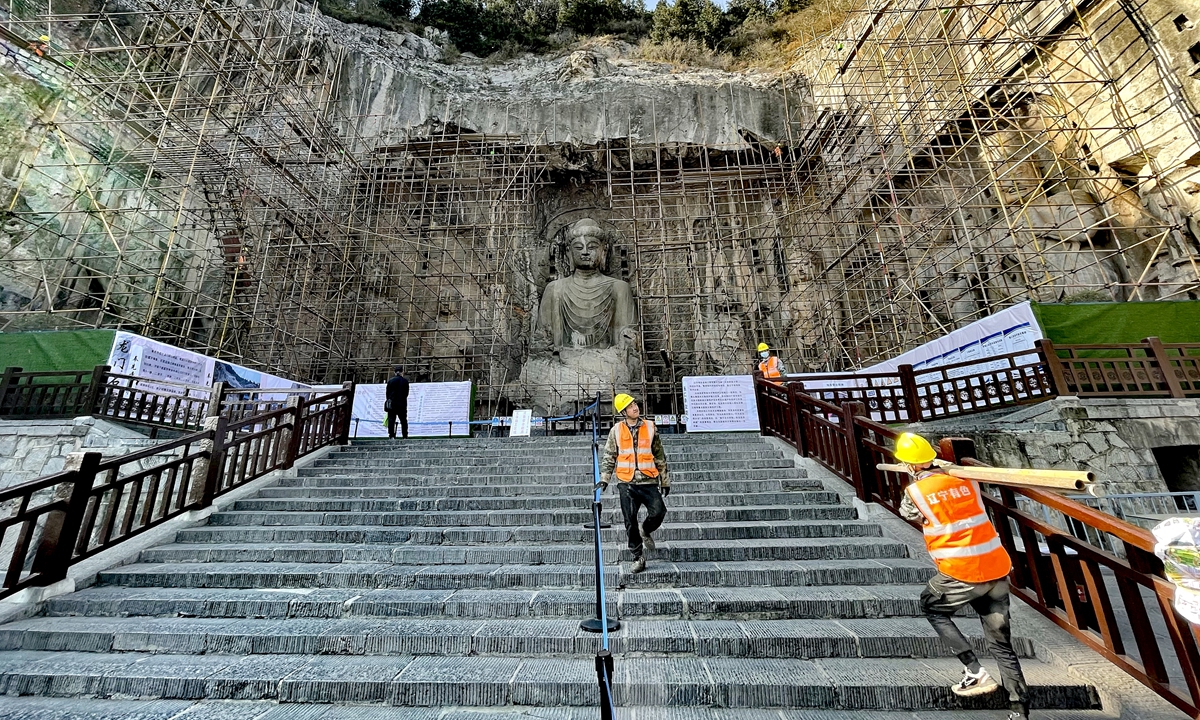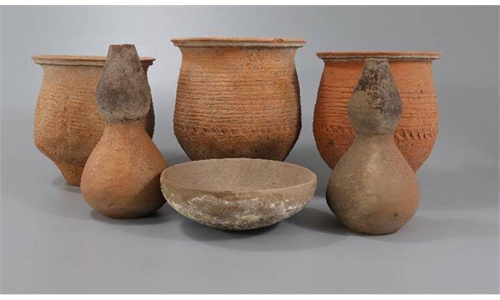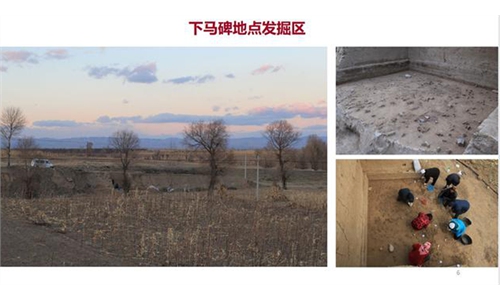ARTS / CULTURE & LEISURE
New discovery at World Heritage Site Longmen Grottoes reveals splendid carving skills of ancient Chinese

The Longmen Grottoes in Central China's Henan Province Photos;Courtesy of the Longmen Grottoes Research Institute
For the first time, Chinese archaeologists detected traces of gold and silver as well as colored glass on the faces of the Buddhist statues at the Longmen Grottoes in Central China's Henan Province. This is a significant find for the study of the art, workmanship and preservation of the grottoes, according to the Longmen Grottoes Research Institute.Shi Jiazhen, director of the institute, told the Global Times on Thursday that the discovery of gold and silver traces on the Vairocana Buddha, a giant statue that was built during the Tang Dynasty (618-907), shows that the ancient Chinese had skillfully mastered gilding in the creation of Buddhist statues during the Tang Dynasty.
According to Shi, the archaeological site was found using about five to six scientific archaeological technologies.
On the surface of the giant Buddha, archaeologists also found the remains of green, red, black and other colored pigments, indicating that the statue was probably "wearing colorful clothes" at that time.
Meanwhile, colored glass eyes made of silica and lead were discovered inset in a Bodhisattva statue on the right side of the Vairocana Buddha. The eyes are arc-shaped and about 0.5 centimeters.
According to Shi, it is very interesting that the eyes of the Bodhisattva statue are not asymmetrical. "The ancients may have wanted to convey the message that the Bodhisattva statue was coercing the Vairocana Buddha as the figure of the Bodhisattva statue is turned slightly to the left, reflecting the superb carving skills of the ancients," he said.
On the surface of the Bodhisattva statue, archaeologists also found a white substance with a uniform thickness that is mainly composed of lead white. Experts said this helped the statue resist natural weathering.
Shi said the archaeological team is planning to make an assessment of the entire Longmen Grottoes that will include examining erosion, after which it will propose a protection plan for the grottoes.
The Longmen Grottoes boast some of the finest examples of Chinese Buddhist art. There are more than 100,000 statues within the site's 2,345 caves. The nearby region also has nearly 2,500 steles and inscriptions, hence its nickname "Forest of Ancient Steles."
In 2000, the site was added to the UNESCO World Heritage List as "an outstanding manifestation of human artistic creativity," for its perfection of an art form.




